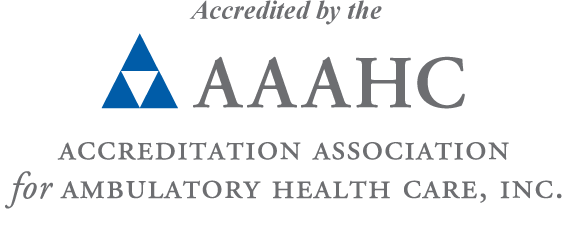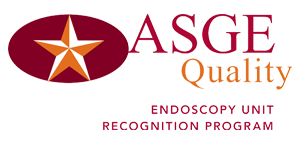Endoscopic Ultrasonography (EUS)
General Information:
- Description: A long, flexible tube with an ultrasound attachment is inserted into the mouth or rectum and guided through either the upper gastrointestinal tract (esophagus, stomach, and duodenum) or the lower gastrointestinal tract (rectum and colon). Once the endoscope is in place, the doctor turns on the ultrasound attachment, producing soundwaves that create an image on a TV screen in the room. A Gastroenterologist performs the test with assistance from a nurse in a hospital, endoscopy suite or doctor’s office. The Gastroenterologist interprets the results. If specimens are obtained, a Pathologist interprets the results. The test takes 15-60 minutes to complete.
- Discomfort – An intravenous line has to be placed. Depending on the level of sedation, there may be some discomfort as the scope is passed through the colon and as air is instilled into the intestines. Some people experience slight discomfort as the endoscope passes down the throat.
- Results – The Gastroenterologist’s interpretation is available immediately; 2-3 days for results from tissue samples obtained.
- Risks of Procedure – Colon perforation is the major risk and occurs in 0.01% to 0.5% of cases. Other risks include bleeding, infection, and adverse reaction to the medication used for sedation.
Indications for the Test
- To further evaluate abnormalities identified in the digestive tract by other tests.
- To identify a source of abdominal pain, diarrhea, bleeding, or abnormal weight loss.
- To provide more detailed pictures than can be obtained in other tests.
Preparation
- When having an EUS of the lower digestive tract, only clear liquids are consumed on the day before the test. After midnight on the morning of the test, nothing should be consumed, except medications as directed by your doctor.
- A special medication (laxative) will be given the day before the test with instructions on how to take it. An enema may be prescribed on the morning of the test. It is important that the laxative be taken as prescribed in order for the colon to be cleaned adequately.
- When having an EUS of the upper digestive tract, nothing should be consumed for 8 hours before the test, except medications as directed by your doctor. No colon cleansing preparartion is required for the upper EUS.
- Aspirin, non-steroidal anti-inflammatory drugs (aspirin substitutes), blood thinners, anticoagulants, and iron supplements should not be taken for five days before the test to reduce the risk of bleeding.
- If the procedure is performed on an outpatient basis, the patient must arrange in advance to have someone waiting in the lobby during the procedure to drive them home afterward.
- Patient will be asked to remove all clothing and wear a hospital gown.
- If patient is at a high risk of certain types of heart disease, they may be given antibiotics to prevent infection, since there is a small risk that infectious organisms from the bowels may penetrate the bloodstream as a result of this procedure and may travel to the heart.
Procedure
- After changing into a hospital gown, you will have an intravenous line placed for the sedative to be given.
- Monitors are attached to observe the blood pressure, pulse rate, and oxygen level of the blood. Supplemental oxygen is given via the nose.
- Once you are sedated, the doctor guides the ultrasound endoscope into the area to be examined. The ultrsound is then turned on and the image is viewed by the doctor on a monitor in the room.
- If indicated by the findings, the doctor can take tissue samples, treat sites that are bleeding, or remove polyps (growths).
- During the test, you may have discomfort related to a feeling of distention. Breathing slowly and deeply usually relieves this discomfort.
After the Procedure
- You are monitored in the recovery area until the sedation wears off.
- Once the sedation wears off, you may have someone drive you home.
- You pass large amounts of gas for several hours after the test.
- If you had an upper EUS, you may experience a sore throat for a few days following the test. Over the counter lozenges will help soothe a sore throat.
- You may be advised not to take aspirin or aspirin substitutes for up to 2 weeks after the test.
- Notify your doctor immediately if you experience bleeding, severe pain, or fever after the test.
Factors Affecting Results
An incomplete bowel preparation, or the presence of food or blood in the stomach, will obscure the lining of the digestive tract, limiting the doctor’s ability to examine the colon.
Advantages
- The EUS provides the doctor with more detailed images than other similar tests.
- Abnormalities identified can be biopsied and polyps can be removed during the test.
- Diseases of the pancreas, gallbladder, and bile duct can be diagnosed.
Disadvantages
- The preparation for the test is unpleasant.
- There may be some discomfort during the test.
- The test is invasive.


